
From 1840 to 1902, around 100 people were buried in Lincoln Memorial Cemetery, one of Carlisle’s first Black cemeteries. This cemetery was the final resting place for 35 United States Colored Troops veterans. At the time of the cemetery’s use, many of the soldiers laid in graves without headstones. In 1882, the borough of Carlisle decided to change that. On May 25, 1882, it was announced in a Carlisle paper that the headstones had arrived and were beginning to be put into position. Finally, the black heroes of the Civil War and many other people, some who were former slaves, would be honored in a proper way, too. Many of which were former slaves able to create a new life for themselves. However in the 1970’s, despite many protests, the headstones of Lincoln Cemetery were removed and a park was placed on top of the bodies. The headstones were never seen again. All that remains as a reminder of these people and their history is a memorial plaque that list off the names above and one headstone. Our project is focused on fighting the erasing the history of historically marginalized peoples, a prominent the social justice issue. The Jordan Family was buried there, on top of their bodies is a walkway that cuts through and crosses over the cemetery. It is as if the people buried there never lived at all.
The Thompsons of Carlisle
There are not Thompsons buried in Lincoln Cemetery. Instead the family was buried in Union Cemetery, the second black cemetery, across town. However, the family is deeply important to both Lincoln Cemetery and the community of Carlisle. Before the land became a park, even before it became a cemetery, it was called Thompson Woods and it was owned by a former slave, Robert Thompson Sr.
Robert Thompson Sr. was a slave from Front Royal, Virginia. When he came to the town of Carlisle, he could not read or write. He was given an axe by a neighbor and began a wood chopping business with that money he expanded and bought a horse and wagon, and then he expanded even further buying his first property. Thompson then became a contractor and builder. From there, he began to buy property after property until he became the largest individual colored land owner in the state of Pennsylvania and the richest colored man in the county. The Carlisle Newspaper described the wedding of Ida Thompson, one of Robert Thompson’s daughters, to Rev. John Smith as the biggest and best wedding in the county. After his death, his son bought even more land until collectively the estate owned 81 houses, with black and white tenants, 127 30×40 foot building lots in the heart of Carlisle, and 15 acres of land, some of which later became Colored burial grounds.
Robert Thompson was well res pected by the black and white people of Carlisle. He was a member of the Carlisle Star Lodge of Masons. After his death, the Carlisle Newspaper released a full article detailing his life and accomplishments. He died on March 5, 1900 at the age of 72 and was buried at the Thompson Rest in Union Cemetery. He was survived by his wife Annie Thompson and his children Mary, Ida, Rachel, Maria, Julia, and Robert Jr. There is one grandson I found in my research named George Thompson, son of Robert Thompson Jr. There is a newspaper article stating he was attending college at Lincoln University in North Carolina and would graduate in June of 1895. After his graduation, George planned on practicing medicine.
pected by the black and white people of Carlisle. He was a member of the Carlisle Star Lodge of Masons. After his death, the Carlisle Newspaper released a full article detailing his life and accomplishments. He died on March 5, 1900 at the age of 72 and was buried at the Thompson Rest in Union Cemetery. He was survived by his wife Annie Thompson and his children Mary, Ida, Rachel, Maria, Julia, and Robert Jr. There is one grandson I found in my research named George Thompson, son of Robert Thompson Jr. There is a newspaper article stating he was attending college at Lincoln University in North Carolina and would graduate in June of 1895. After his graduation, George planned on practicing medicine.
Robert Jr. inherited his father’s land and began to buy more. However, in 1907 and 1908 he began to sell some. The reason is still unclear to me. However, this trend may have continued which may explain why the Thompsons do not control much of Carlisle today. There is still much that needs to be discovered about the Thompsons. What happened to all their land? Did it involve the practice of land grabbing or did the Thompsons sell the land willingly? Are the other grandchildren? Do any relatives still live in Carlisle? Either way, it is clear the Thompson shaped the history and the future of Carlisle as well as Cumberland County.
The Youngs of Carlisle
What the Thompsons were for business, the Youngs were for education. Robert C. Young was employed as a janitor and police officer by Dickinson College for over 31 years. He was described as “intelligent, progressive, at the forefront of advancement of race, demanding of recognition when denied, respected by students, and the best people of the community have confidence in him”. He was the Treasurer of the committee that bought the land for Lincoln Cemetery, in which he was later buried.
He fought tirelessly to get his son, Robert G. Young, accepted into Dickinson College. The school had yet to accept any black students and Young felt his son was fully deserving of the spot. His other son, James G. Young, became the first black man to graduate from Shippensburg University, then called Cumberland Valley Normal School. He also was the school’s first black football player. After his graduation, he returned to Carlisle as a public school teacher. Young’s daughter, Pricilla Young, applied to Carlisle’s white high school. While the Young family tried to integrate schools, they also fought to make the colored schools of Carlisle better. Robert Young formed a committee and brought issues such as inadequate supplies and buildings the black children of Carlisle were forced to use for their schooling. The committee also tried to convince the school board to not close black schools and to hire black teachers for the black students and their white counterparts. There are many questions left about the Young family as well. How many children were there in the family? Were there any grandchildren and did the carry on the family’s powerful legacy? Are there any surviving? Youngs in Carlisle? How did the Youngs come to Carlisle? The Youngs left their mark on the Carlisle community, both in the hearts of the people and the system of the laws.
Process
To start my project I went to the Cumberland County Historical Society. In the beginning, my research was broadly focused on Lincoln Cemetery and the history of its creation. There were few sources on the cemetery and each source tended to repeat the same information, except for one, a large book called Lincoln Cemetery “The Story Down Under” 1884-1905. Published in 2011 by Janet L. Bell, this book was full of old newspaper clips about the black people of Carlisle who were involved or attached to the cemetery in some way. This is where I began to narrow my search to families. I continued to see the names Thompson and Young in articles stating that they had done amazing things. From there, I was able to find old department of history records titled Colored Education and a drop file full of all sorts of articles about the black people of Carlisle called Black History. Another source that was partially helpful was the Pennsylvania Negro Business Directory 1910.
I felt I could only research two families because it allowed me to set a goal for myself and bring the project more into focus. However, I feel all of the black families in Carlisle, related to the cemetery or not, have a rich history that deserves to be shared. I was surprised to find the lack of resources on the black people of Carlisle compared to the white ones. Black history is not as valued. This devaluation of some history can even be seen in black history. The Thompsons had more readily available information on them than the Youngs did because, while both families had profound effects on the black community, only the Thompson effected the white people of Carlisle enough to be deemed important. This is a trend that must be stopped because we lose important narratives and stories because of it.
-Naji Thompson ’19
The Lanes of Carlisle
The Lane family contributed to Carlisle’s economic success and community by working jobs that required hard labor or physical services within the community. The First of the Lane family was Abraham “Abram” Lane who was born in1801 and died at the late year of 1901. Abraham was a field slave for the Humrich family in Franklin County near Greencastle, Pennsylvania. He died at the age of 100 and left two sons named James Lane, who himself had a son named Robert J. Lane, and Nace Lane
Nace Lane was born in the year of 1822 and died in1892. He was known in Carlisle as “Uncle Nace” and often was seen as a positive community member according the book. He worked as a coachman for Judge Sadler and lived in Mulberry Alley. His life was tragically taken by disease of the liver. As Nace’s life came to a close, the life of Robert J. Lanes life was opening up.
Robert J. Lane was born in 1866 in the Borough of Carlisle. He was known around Carlisle as a “bright young man and a good character.” Robert worked as a boot black or boot shiner for Phillip Gebbardt’s barbershop. This form of employment was very common for a black man at this point and time. Since the late years of slavery, Black men have used shoe shining as a base of employment and as an alternative to farm labor. In the year 1940, 412 Black men out of every 1000 was employed as a farm laborer. Robert not only was a contributor to his community but he also contributed to the game of American football. On December 9th, 1899, Robert was one of the first Black quarterbacks for the Carlisle Colored Football team. Unfortunately, his achievement was short lived because a week later, he died at the age of 23. Dr. Krise, the physician on duty at the game said that Robert died from “internal injuries” from playing football. During this time, Carlisle was creating the foundation to this violent game and so football did not have imply set of rules nor did it require its players to wear proper safety equipment; Injuries and deaths like Roberts were fairly com mon.
mon.
While continuously digging, I found that the Lane family also has a history in serving in the military during the Civil War. George Washington Lane was a soldier and member of Post 440 in the Grand Army of the Republic, which is brotherhood or fraternal organization made up of military veterans, and a member of the Company E of the 8th Regiment for the Colored Infantry which was located in Ohio. This G.A.R. post that he was apart of is now diminished but it was connected to the posts in Cumberland County for forty years. George also fought in the historic the Siege of Petersburg. The battle was a series of battles that took place in Richmond and Petersburg, Virginia. The casualties for this battle were 11,200 and most of the deaths were union casualties; George is lucky to have survived this battle. Before George joined the military he was a sharecropper who worked on the R.P. Henderson farm for more than ten years. He was born in 1840 and died at the age of 56.
Finding the Lanes
In the beginning of my groups research we were given a list of names of Black Carlisle residents who were deceased and buried at the Lincoln Cemetery; many of the deceased were buried with their family members. After multiple attempts at searching through the Cumberland Counties archives to find information on families such as the Johnsons, Baltimores, and Jacksons, I finally stumbled across the Lane Family. I found information on the Lane family when I found a book titled “Lincoln Cemetery “The Story Down Under” 1884-1905” which was published by Janet L. Bell in 2011. In this book, were newspaper articles from the “Daily Evening Sentinel”, which was later changed to the “The Evening Sentinel,” on the Black members of Carlisle all ranging from wedding announcements to death announcements.
Not only did this book disclose articles on the families but it also has articles on the actual case that was based by Carlisle to remove the tombstones and build the park. As I read more about the case I discovered that citizens who lived near the Lincoln Cemeery, mostly white, petitioned to “renovate” the cemetery into a park. Many of the members of the Carlisle community called the cemetery a “disgrace” because the Borough of Carlisle only “cleans it twice a year” which hints at the fact that Carlisle had no respect or initiative to beautify Lincoln Cemetery. One of the interesting points about this case is that a Dickinson School of Law student, Barry Kohn, was responsible for sparking the initiative to get community members to sign a petition to remove the tombstones and build a park over the cemetery. The book even included that the new park was going to be named after James Young but never received approval; an estimated $90,000 of state funds was spent on this project which could of have been used to revamp the previous cemetery and even provide the Borough of Carlisle with more funding for other necessities such as school funding.
The Hodge Family
For this project, we were given a list of names of the people buried in Lincoln Cemetery. In order to maximize time, I chose one family to research and I chose the Hodge family. The Hodge Family is one of the oldest African-American families in Carlisle. To find information, I searched the Dickinson Archives as well as the database at the Cumberland County Historical Society. At first, it was difficult to find information at the historical society because there were so many Hodges that I did not know where to start. I then came across a book written by a member of the Hodge Family detailing her family’s history.
The book, titled Courage and Faith: Hodge and Roebuck Family, began with the author’s Maternal Great Great Grandfather, Peter Hodge. Peter Hodge was born in Shepherdstown Jefferson County, Virginia in 1805. He and his wife Lucy Norris left Virginia for Carlisle after conditions continued to get worst for slaves following the Nat Turner and John Brown Rebellion’s. Peter Hodge and his family came to Carlisle using the Underground Railroad. They were affiliated with the First Presbyterian Church of Carlisle, which also had connections with the Underground Railroad. Lucy Norris Hodge died in Carlisle in 1872 and is buried in Lincoln Cemetery. The date of Peter Hodge’s death is unknown and he is also buried in Lincoln Cemetery.
Peter and Lucy Hodge had multiple children, but William Henry Hodge Senior is highlighted because he is M.R Beck’s (the author’s) great grandfather. He was born in 1832 in Jefferson County, Virginia. William Hodge Sr and his wife Mary Louise Hodge as well as their children were also slaves. The Emancipation Proclamation of 1863 did not free the Hodge Family so they fled Virginia along with Peter and Lucy Hodge. William Henry Hodge Sr served in the civil war for the union as a teamster, which is a driver of one or a team of horses doing hauling of supplies, and he came to Carlisle after the Battle of Gettysburg. His wife Mary Louise left Virginia between 1862 and 1864 with their daughter Louisa “Luly” because it was easier to escape slavery in smaller groups. Mary Hodge died in 1884 at the age of 38 and was buried in Lincoln Cemetery.William Hodge remarried in 1888 and died in 1911 at 78. According to the census, he resided at 520 Fairground Avenue and was buried in Union Cemetery.
Matilda H odge is the daughter of William Henry Hodge Senior and B.R. Mack’s maternal grandmother. She was born in Carlisle in 1879. After her mother died and her father remarried Matilda Hodge’s other siblings left their home, leaving her their alone with her father and stepmother. In 1897 at the age of 18 Matilda Hodge gave birth to a “mulatto” daughter, Ethel Mae. According to oral history, Ethel Mae was shunned and unwelcomed in the Hodge family. Ethel Mae’s alleged father was a Dickinson College professor and was not involved in Ethel Mae’s life. After her birth, Matilda Hodge was forced out of her father’s home, causing Ethel Mae to have to live with a non-relative in Carlisle. Ethel Mae Hodge grew up in a home on 422 North West street in Carlisle, Pa.
odge is the daughter of William Henry Hodge Senior and B.R. Mack’s maternal grandmother. She was born in Carlisle in 1879. After her mother died and her father remarried Matilda Hodge’s other siblings left their home, leaving her their alone with her father and stepmother. In 1897 at the age of 18 Matilda Hodge gave birth to a “mulatto” daughter, Ethel Mae. According to oral history, Ethel Mae was shunned and unwelcomed in the Hodge family. Ethel Mae’s alleged father was a Dickinson College professor and was not involved in Ethel Mae’s life. After her birth, Matilda Hodge was forced out of her father’s home, causing Ethel Mae to have to live with a non-relative in Carlisle. Ethel Mae Hodge grew up in a home on 422 North West street in Carlisle, Pa.
This preservation of history project is important because it serves as a means of connecting the intellectual with the Black Carlisle community. According to Howard McGary, there is a common feeling of disconnect between the black community and those who “make it out” (72). This preservation of erased black history is a contribution to a community that may feel like there is a disconnection.
Conclusion
During this project, we were only able to focus our research on four families. However, these are not the only families or stories that are important. The erasure of Black history is an important issue to keep in the forefront. B.R. Mack said, “For those of you who are indifferent about your heritage, I hope you embrace it; For those of you who are in the dark about your heritage, I hope you’ve been enlightened; For those of you who are aware of your heritage, I hope you are enriched; and for those who appreciate your heritage, keep it alive and prevent the foundation from crumbling”. We can only build our future on the solid foundation of our history. Those who are passionate about the preservation of history, as it relates to social justice, are best suited for this project.

Resources:
Beck, M. R. Courage and Faith: Hodge and Roebuck Family,. Salt Lake City: Family Heritage, 2012. Print.
Bell, Janet L. Lincoln Cemetery “The Story Down Under” 1884-1905. 2011. Print.
“Black History.” Drop file collection. Cumberland County Historical Society, Carlisle, P.A.
Colored Education, Carlisle Schools, 1856-1934. Information excerpted from the official records of the school system, Compiled 1935. Cumberland County Historical Society, Carlisle, P.A.
“Lincoln Cemetery Memorial Park, Carlisle, PA.” House Divided The Civil War Research Engine at Dickinson College. Dickinson College. Web. 4 May 2016. <http://hd.housedivided.dickinson.edu/node/33463>.
Pennsylvania Negro Business Directory 1910. Harrisburg: Jas. H. W. Howard and Son, 1910. Print.
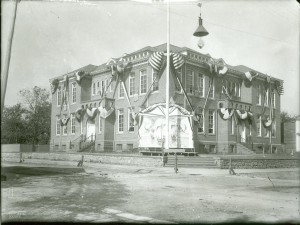 Wilson School
Wilson School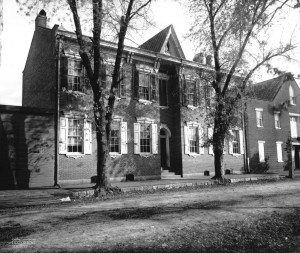 Lincoln School
Lincoln School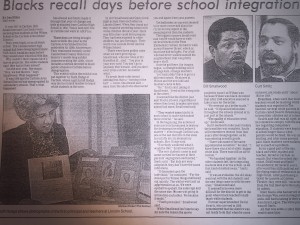 Archival research enabled me to uncover the origins of the two “colored” schools in Carlisle, individuals that worked at these schools, as well as the many problems school board officials faced during this time period. In short, the first “colored only” school actually “[began] in the basement of the African Church on Pomfret St., now Bethel A.M.E” (Development Of Education for Colored in Carlisle), by four members of the The Lady Benevolent Society in 1836. Due to, of course, the racial tensions in Carlisle, the first school for black children was underfunded and overcrowded. Despite this, however, Miss Bell, a white woman who was asked to come help teach, taught the students skills such as reading, religion, and sewing. Historically, this alliance between white teachers and black school is evident as white teachers from the north often migrated to the south to teach black students. Noting that Miss Bell was a white woman highlights this idea of alliances that were needed for social justice to be successful. It is not just about the black the organization, but the allies that helped make resources available to these organizations. Shortly after the Lincoln School had been built, another public school, known as the Wilson School, opened in 1890. Initially serving as a high school, the Wilson building would soon become an elementary school for only black children. Typical of many segregated schools in parts of country, these two Carlisle schools lacked resources that were accessible to their white counterparts. For example, in an article entitled “Blacks Recall Days Before School Integration”, a young African American student asked “Why couldn’t their classes have a movie projector, like white students say they had at their school? (Miller). This show the distributive injustice that was endured by African American schools, which often hindered the success of black students.
Archival research enabled me to uncover the origins of the two “colored” schools in Carlisle, individuals that worked at these schools, as well as the many problems school board officials faced during this time period. In short, the first “colored only” school actually “[began] in the basement of the African Church on Pomfret St., now Bethel A.M.E” (Development Of Education for Colored in Carlisle), by four members of the The Lady Benevolent Society in 1836. Due to, of course, the racial tensions in Carlisle, the first school for black children was underfunded and overcrowded. Despite this, however, Miss Bell, a white woman who was asked to come help teach, taught the students skills such as reading, religion, and sewing. Historically, this alliance between white teachers and black school is evident as white teachers from the north often migrated to the south to teach black students. Noting that Miss Bell was a white woman highlights this idea of alliances that were needed for social justice to be successful. It is not just about the black the organization, but the allies that helped make resources available to these organizations. Shortly after the Lincoln School had been built, another public school, known as the Wilson School, opened in 1890. Initially serving as a high school, the Wilson building would soon become an elementary school for only black children. Typical of many segregated schools in parts of country, these two Carlisle schools lacked resources that were accessible to their white counterparts. For example, in an article entitled “Blacks Recall Days Before School Integration”, a young African American student asked “Why couldn’t their classes have a movie projector, like white students say they had at their school? (Miller). This show the distributive injustice that was endured by African American schools, which often hindered the success of black students.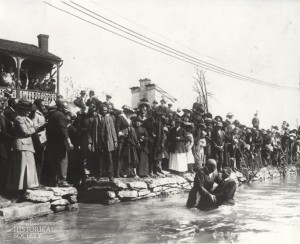
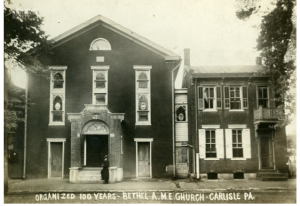 ool” utilized the basement as a room where
ool” utilized the basement as a room where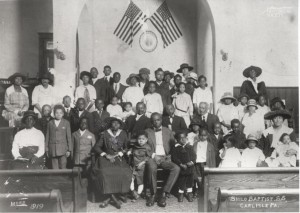

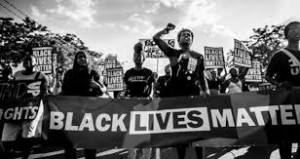 According to Howard McGary, “[c]itizenship, in the liberal tradition, is thought to provide one with the opportunity to flourish by arranging society, such that its basic structure does not unfairly inhibit or prohibit one’s pursuit of a chosen plan of life” (65). Student reflections in this section examine issues of citizenry in the African American community of Carlisle. They begin with a discussion of the significance of voting as a right of citizenship and the importance of African American participation in the electoral process. This discussion is highlighted by their participation in a voter registration drive that took place in February 2016, during the Black History Festival that was hosted by Hope Station.
According to Howard McGary, “[c]itizenship, in the liberal tradition, is thought to provide one with the opportunity to flourish by arranging society, such that its basic structure does not unfairly inhibit or prohibit one’s pursuit of a chosen plan of life” (65). Student reflections in this section examine issues of citizenry in the African American community of Carlisle. They begin with a discussion of the significance of voting as a right of citizenship and the importance of African American participation in the electoral process. This discussion is highlighted by their participation in a voter registration drive that took place in February 2016, during the Black History Festival that was hosted by Hope Station.